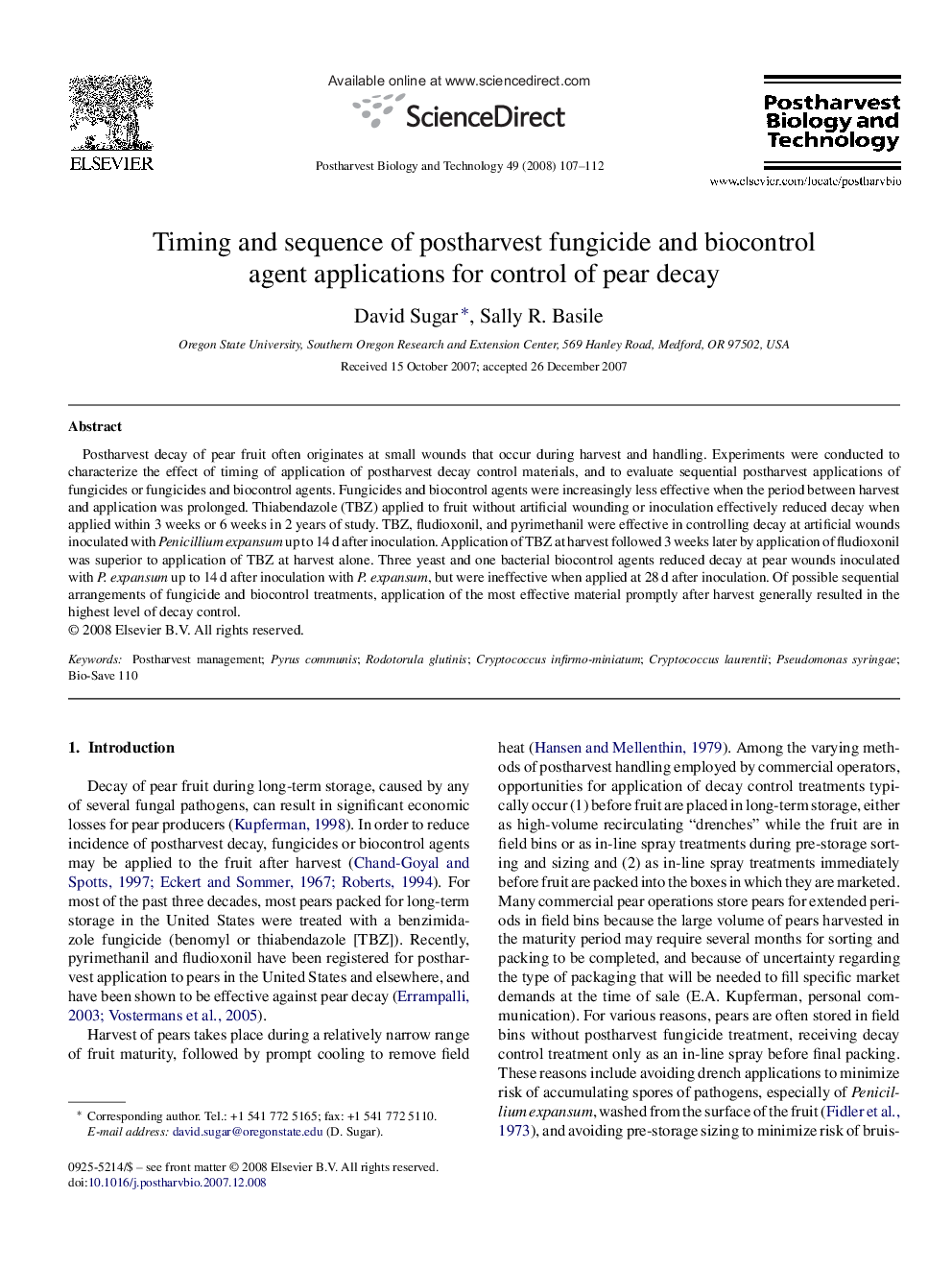| Article ID | Journal | Published Year | Pages | File Type |
|---|---|---|---|---|
| 4519444 | Postharvest Biology and Technology | 2008 | 6 Pages |
Postharvest decay of pear fruit often originates at small wounds that occur during harvest and handling. Experiments were conducted to characterize the effect of timing of application of postharvest decay control materials, and to evaluate sequential postharvest applications of fungicides or fungicides and biocontrol agents. Fungicides and biocontrol agents were increasingly less effective when the period between harvest and application was prolonged. Thiabendazole (TBZ) applied to fruit without artificial wounding or inoculation effectively reduced decay when applied within 3 weeks or 6 weeks in 2 years of study. TBZ, fludioxonil, and pyrimethanil were effective in controlling decay at artificial wounds inoculated with Penicillium expansum up to 14 d after inoculation. Application of TBZ at harvest followed 3 weeks later by application of fludioxonil was superior to application of TBZ at harvest alone. Three yeast and one bacterial biocontrol agents reduced decay at pear wounds inoculated with P. expansum up to 14 d after inoculation with P. expansum, but were ineffective when applied at 28 d after inoculation. Of possible sequential arrangements of fungicide and biocontrol treatments, application of the most effective material promptly after harvest generally resulted in the highest level of decay control.
